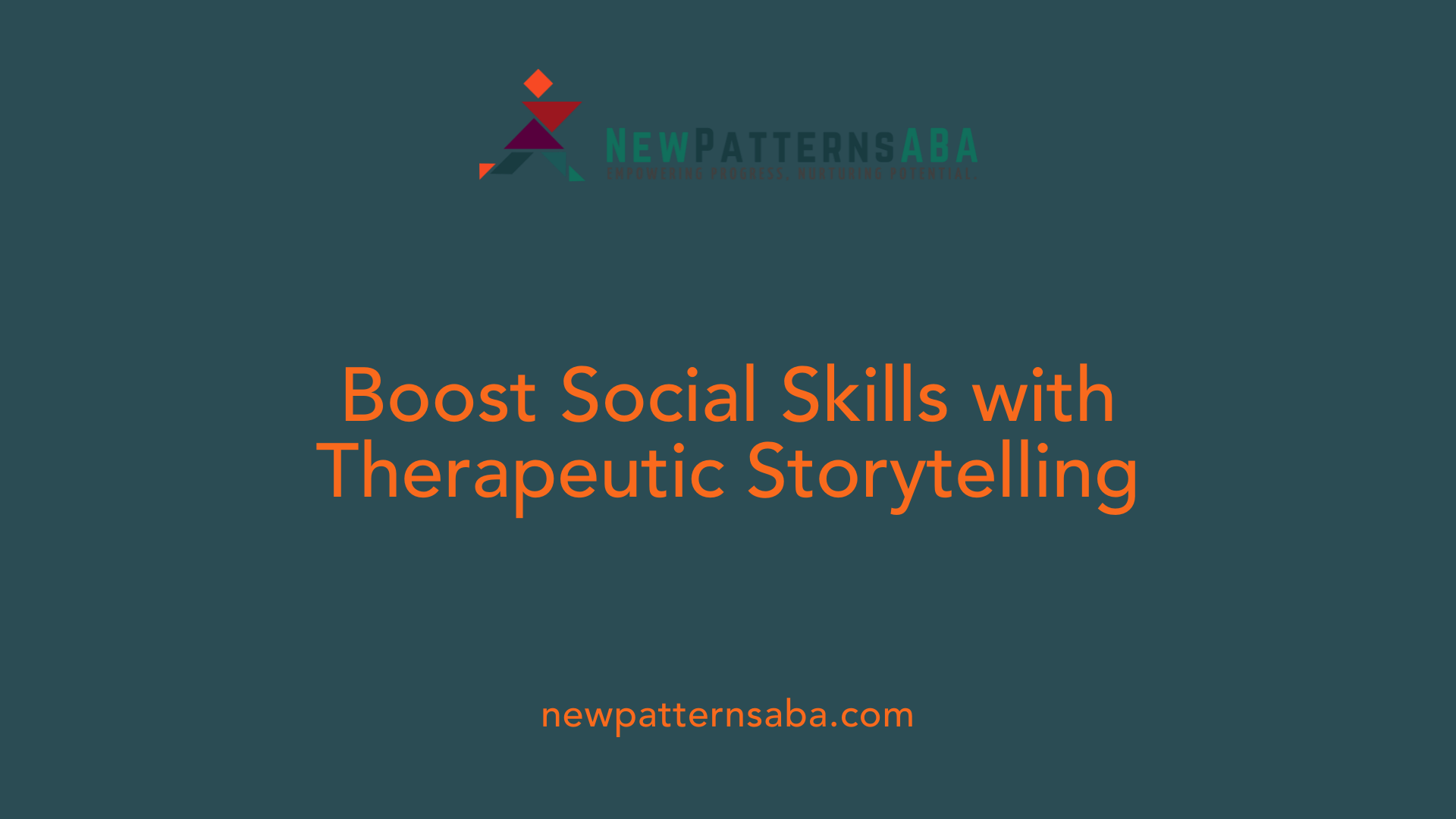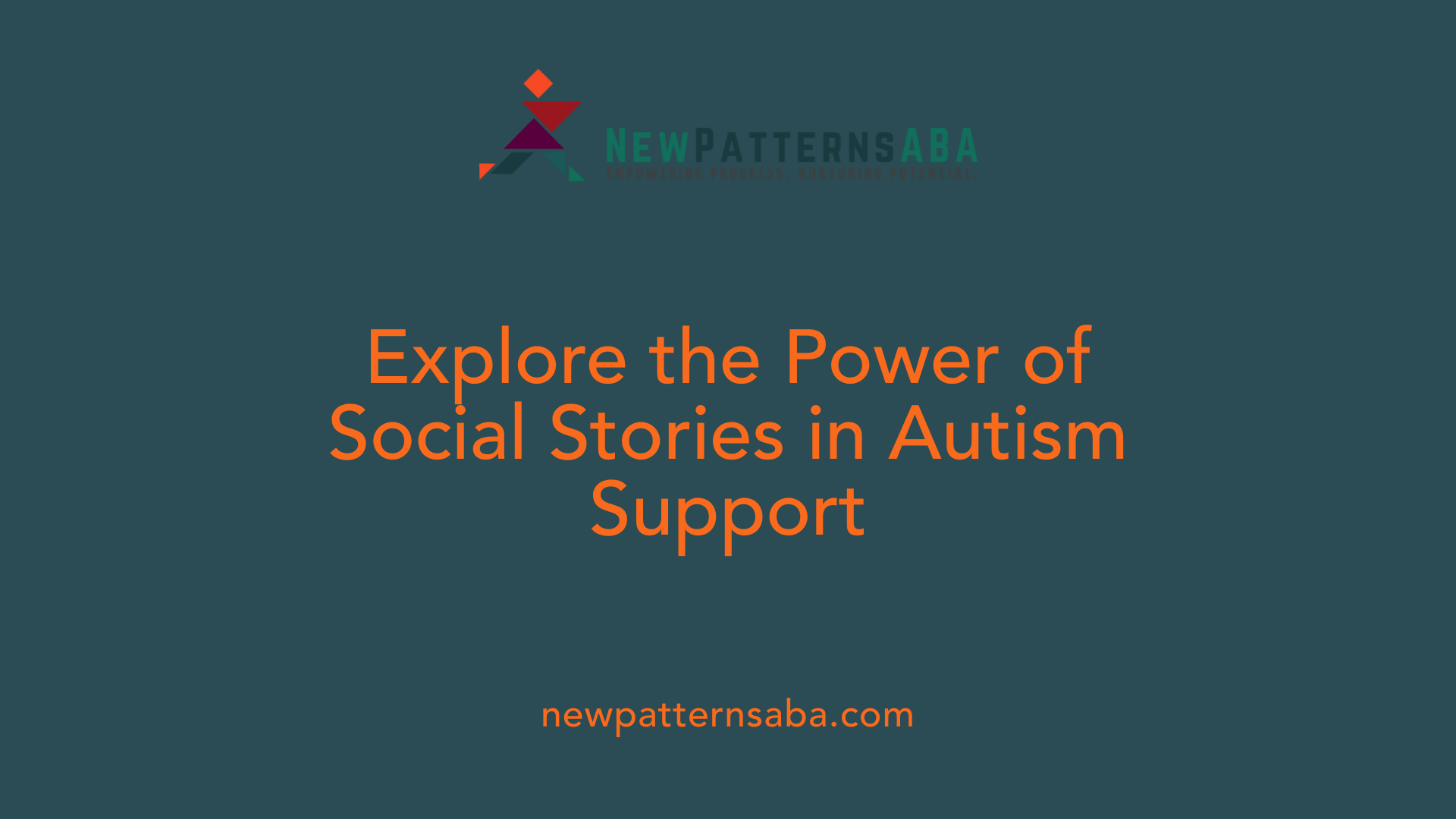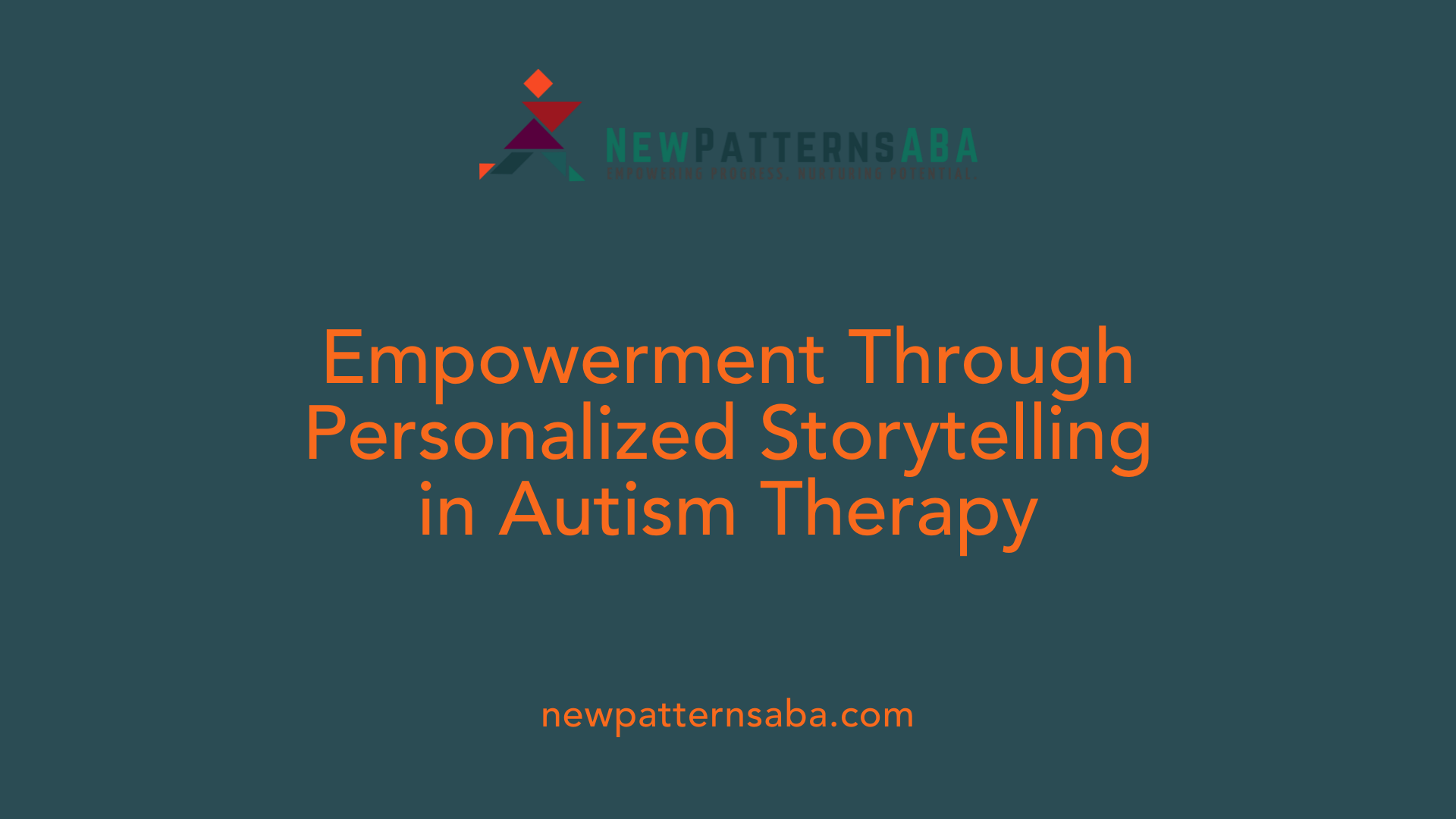How Storytelling Transforms Autism Therapy: Unlocking Social and Communication Skills
Storytelling as a Therapeutic Tool in Autism
Storytelling, once merely a pastime, has now emerged as a powerful therapeutic technique for children with autism spectrum disorder (ASD). Through structured narratives and interactive sessions, storytelling helps improve social skills, communication, and behavioral outcomes. This article explores the multifaceted benefits of storytelling interventions within autism therapy, including their relationship to Applied Behavior Analysis (ABA) and behavioral analysis techniques.
Understanding Applied Behavior Analysis (ABA) and Its Role in Autism Therapy
What is Applied Behavior Analysis (ABA) therapy and how does it relate to autism?
Applied Behavior Analysis (ABA) therapy is a scientifically supported approach that helps individuals with autism spectrum disorder (ASD) improve a range of skills and lessen problematic behaviors. It operates on the principle of understanding behavior by examining its context—what happens before and after (Antecedent-Behavior-Consequence)—to influence positive changes.
ABA therapy customizes interventions based on individual needs, focusing on enhancing communication, social interaction, attention, and academic capabilities. These efforts collectively aim to improve a person's overall functioning and quality of life.
Definition and principles of ABA therapy
ABA uses structured, evidence-based techniques such as positive reinforcement to encourage desirable behaviors while reducing undesired ones. Professionals typically trained in ABA, like Board Certified Behavior Analysts (BCBAs), employ methods including:
- Discrete Trial Training (DTT): Breaking down skills into small, teachable units
- Naturalistic Teaching: Utilizing everyday interactions as teaching moments
How ABA relates to autism treatment
ABA is widely recognized for its effectiveness, especially when applied intensively and early in a child's development. It supports autistic children in mastering vital skills like social communication, imitation, eye contact, and adaptive functioning—areas often addressed through complementary tools like social stories and therapeutic storytelling.
Techniques used in ABA
Within ABA programs, targeted techniques may include:
- Social Narratives: Short, descriptive stories guiding understanding of social scenarios
- Verbal and Visual Imitation Strategies: Teaching through modeling and role-playing
- Peer Interaction: Structured group sessions to encourage social participation
These strategies help children better navigate social cues, reduce anxiety, and replace disruptive behaviors with constructive ones, improving their daily social participation and independence.
Setting the Goals: What Autism and Behavioral Therapies Aim to Achieve
What are the typical goals of therapies focused on autism and behavioral analysis?
Therapies for autism spectrum disorder (ASD), especially those based on applied behavior analysis (ABA), focus on several core objectives tailored to individual needs. Primarily, these therapies aim to improve communication skills, helping children express themselves more effectively through both verbal and nonverbal means.
Social interaction is another crucial area, with goals targeting the development of skills such as eye contact, turn-taking, and understanding social cues. This enhancement supports more meaningful peer and family relationships.
Reducing problematic behaviors—such as aggression, self-injury, or disruptive actions—is also a key therapeutic aim. By teaching appropriate replacement behaviors and coping strategies, these interventions seek to create more positive daily experiences for the child.
Independence in adaptive daily living skills plays a significant role as well. Therapy encourages abilities like self-care, routines, play, and participation in community activities, promoting autonomy and quality of life.
Foundational abilities such as attention, imitation, and receptive language are nurtured, as they form the building blocks for broader learning and social engagement. Through careful assessments and collaboration with caregivers, goals are personalized and progress monitored continuously to maximize developmental outcomes.
Who Provides Autism Therapy Based on Behavioral Analysis?

Who typically provides therapy services for autism based on behavioral analysis?
Therapy services grounded in behavioral analysis, particularly Applied Behavior Analysis (ABA), are mainly delivered by licensed professionals including licensed psychologists and Board Certified Behavior Analysts (BCBAs). These experts have specialized training in autism interventions and oversee the design and evaluation of personalized treatment plans.
Supporting them are trained therapists and behavior technicians who implement specific strategies under the supervision of BCBAs or psychologists. This team approach ensures that interventions are consistently and effectively delivered.
Specialized companies frequently facilitate these services, offering tailored ABA therapy programs. Organizations like BlueSprig provide comprehensive support through individualized treatment sessions designed to improve social, communication, and adaptive skills in children with autism.
ABA therapy is versatile and commonly offered across various settings such as the child's home, schools, and community environments. This flexibility helps integrate therapeutic strategies into daily life, ensuring the intervention is relevant and functional.
In summary, autism therapy based on behavioral analysis is provided by licensed and trained professionals working within specialized organizations, deploying evidence-based strategies in multiple settings to foster meaningful developmental progress.
Effectiveness of Behavioral Analysis Therapy in Autism Treatment
How effective is behavioral analysis therapy in treating autism?
Behavioral analysis therapy, especially Applied Behavior Analysis (ABA), has established itself as a highly effective intervention for autism spectrum disorder (ASD). Research consistently shows that ABA improves core social, communication, and adaptive skills in children with ASD.
ABA uses techniques such as positive reinforcement to encourage desired behaviors, task analysis to break down complex skills, and naturalistic teaching to promote learning in everyday settings. These evidence-based methods help reduce problematic behaviors while enhancing essential skills like social interactions and verbal communication.
Early and consistent intervention is crucial. The sooner therapy begins, the better the outcomes in terms of skill acquisition and behavior change. Regular parental involvement plays a significant role in extending the benefits of therapy beyond clinical settings, aiding generalization of learned skills to home, school, and community environments.
While individual responses can vary based on severity of symptoms and therapy quality, ABA's comprehensive, data-driven approach focuses on fostering independence and increasing social participation. Its effectiveness is underscored by numerous studies validating improvements in attention, social engagement, and adaptive functioning among children with autism.
By systematically addressing social and behavioral challenges, behavioral analysis therapy remains one of the most thoroughly researched and validated treatments available for autism spectrum disorder.
Common Techniques in Autism and Behavioral Analysis Therapy
What are some common techniques used in autism and behavioral analysis therapy?
Autism and behavioral analysis therapy employ several well-established techniques to support skill development and behavior modification. One widely used method is positive reinforcement, which involves rewarding desired behaviors to encourage their repetition. Alongside this, discrete trial training (DTT) provides structured teaching by breaking down skills into small, manageable components; clear instructions are combined with immediate rewards for correct responses.
Another technique is natural environment teaching (NET), which focuses on promoting functional skills through everyday activities and interactions in real-life settings. To help children acquire new behaviors efficiently, therapists utilize prompting—offering cues or assistance—and gradually fade these prompts as the child gains independence.
Behavior management strategies play a crucial role, with extinction aiming to reduce problematic behaviors by withholding the reinforcement that maintains them. Complementary to this is functional communication training (FCT), which teaches alternative and appropriate ways for children to express needs and desires, thereby reducing maladaptive behaviors.
Modeling is also commonly applied; by observing others, children learn new skills and appropriate social behaviors. Additionally, analyzing the antecedent-behavior-consequence (ABC) sequences allows therapists to tailor interventions precisely to each child's unique behavioral patterns.
Together, these techniques work synergistically to enhance communication, social interaction, independence, and reduce challenging behaviors in individuals with autism spectrum disorder.
Therapeutic Storytelling to Enhance Social Skills in Children with ASD

What did the storytelling workshops involve?
The storytelling workshops for children with autism spectrum disorder (ASD) and severe mental retardation focused on teaching the imitation of gestures and role-play. Children were encouraged to mimic actions presented in stories, fostering nonverbal communication and social interaction.
How long and structured were the storytelling interventions?
These interventions were extensive and carefully designed, spanning two years with a total of 62 sessions. The structure emphasized therapeutic application, with consistent peer participation and theatrical group activities to strengthen social skills.
What improvements were observed in social functioning and behavior?
Children showed significant progress in social functioning as measured by the Global Assessment of Functioning (GAF) scale. They demonstrated increased imitation of gestures and a notable reduction in problematic behaviors, indicating enhanced social abilities and less behavioral disruption.
How was attention to stories assessed and what were the findings?
Eye-tracking technology was used to measure children's visual attention during storytelling. Results revealed a significant increase in the percentage of time spent watching storytelling scenes, suggesting improved attention to social stimuli and better engagement.
Therapeutic storytelling emerges as a promising intervention that combines gesture imitation, role-play, and focused attention strategies to boost social skills in children with ASD, especially those with severe cognitive challenges.
Storytelling Promotes Key Social and Communication Skills in Autism Therapy
How does storytelling improve nonverbal communication, imitation, and eye contact?
Therapeutic storytelling effectively enhances critical nonverbal communication skills in children with autism spectrum disorder (ASD). By engaging children in activities like gesture imitation during stories and role-playing, these interventions encourage the development of imitation skills and improve eye contact. Eye-tracking assessments from extended studies demonstrate increased visual attention to storytelling scenes, indicating better focus on social cues and stimuli.
In what ways does storytelling enhance social interaction?
Storytelling workshops emphasize social participation by involving children in group activities that foster peer interaction. Through personalized social stories and interactive theatrical performances, children develop empathy, emotional understanding, and improved social perceptions. These narratives break down complex social scenarios into manageable steps, helping children initiate, maintain, and terminate interactions appropriately while reducing problematic behaviors.
How is storytelling integrated with broader behavioral therapy goals?
Storytelling supports multiple behavioral therapy objectives integral to autism interventions. It helps enhance nonverbal communication, facilitate imitation, improve eye contact, and encourage social engagement. The structured, narrative-based approach complements applied behavior analysis (ABA) therapy by addressing specific social challenges such as sharing, turn-taking, and coping with transitions. The use of positive, clear language combined with visual supports aligns with occupational therapy goals to increase participation and independence.
What role does peer participation and group theatrical interventions play?
Group theatrical storytelling sessions provide a dynamic and systematic platform for social learning. Such interventions, spanning multiple sessions over extended periods, utilize peer participation to simulate real-life social interactions. This peer involvement reinforces adaptive functioning, social perception, and cognitive skills, making the therapeutic storytelling approach practical and effective for children with ASD, especially those with severe cognitive impairments.
| Aspect | Description | Impact on Autism Therapy |
|---|---|---|
| Nonverbal Communication | Gesture imitation and role-play during storytelling | Improved eye contact and social cue recognition |
| Social Interaction | Group storytelling with peers and tailored social narratives | Enhanced social participation and reduced behavioral issues |
| Behavioral Therapy Integration | Personalized social stories integrated with ABA and occupational therapy principles | Addresses anxiety, communication, and adaptive behavior goals |
| Peer Participation | Theatrical group activities involving peer modeling and interaction | Boosts social skills, empathy, and cognitive development |
Social Narratives and Social Stories: Structured Storytelling for Autism

What are Social Stories and How are They Created?
Social stories are brief, descriptive narratives designed to break down social situations into clear, manageable steps. They help children with Autism Spectrum Disorder (ASD) understand and navigate social interactions by using language tailored to the individual's needs. These stories incorporate four types of sentences: descriptive (explaining the social setting), perspective (sharing thoughts and feelings of others), directive (guiding appropriate responses), and affirmative (reinforcing positive behavior). Visual supports such as pictures or symbols often accompany these stories to enhance understanding.
Development and Purpose by Carol Gray
Carol Gray developed social stories in 1991, specifically aiming to improve social comprehension in children with autism. The main goals were to reduce anxiety, teach new social skills, enhance communication, and support behavior modification. Since their inception, these stories have become a foundational tool for fostering social interaction and emotional development in autistic individuals.
Incorporation in ABA Therapy for Specific Challenges
In Applied Behavior Analysis (ABA) therapy, social stories serve as a personalized intervention to target particular social challenges. Therapists create stories to address issues like sharing toys, taking turns during play, making eye contact, and managing transitions between activities. These narratives aid children in understanding what to expect and how to respond effectively in various social contexts, facilitating smoother interactions and reducing problematic behaviors.
Practical Examples of Social Stories
Some common scenarios employed in social stories include:
- Grocery shopping: guiding a child through routines and appropriate behavior in a store environment.
- Playing with friends: instructing on sharing, cooperation, and conflict resolution.
- Coping with loud noises: explaining sensory experiences and calming strategies.
Each story uses positive language and visual aids to engage the child and support learning.
Visual and Interactive Storytelling Tools Tailored for Autistic Children
Use of Pictures, Symbols, and Videos
Visual storytelling tools such as pictures, symbols, and videos play a crucial role in facilitating information processing and understanding of social cues for autistic children. These aids simplify complex social narratives, making them more accessible and comprehensible.
Character Development to Foster Empathy and Emotional Awareness
Incorporating character development within stories helps autistic children build empathy and emotional awareness. By following characters' experiences and feelings, children enhance their social skills and emotional insight, which are often challenging areas for them.
Sensory Elements and Interactive Techniques to Increase Engagement
Adding sensory elements—such as tactile materials or sounds—and using interactive storytelling techniques significantly boost engagement and participation. These multisensory approaches align with the needs of many autistic individuals who respond well to varied sensory inputs.
Technology Use Like Apps and Communication Devices
The integration of technology, including specialized apps and communication devices, supports storytelling and self-expression. These tools make storytelling more accessible and customizable to each child's unique abilities and preferences, thereby enhancing the overall therapeutic experience.
Positive Behavioral Outcomes Supported by Storytelling Interventions

How Do Storytelling Interventions Reduce Problematic Behaviors?
Storytelling interventions in autism therapy have demonstrated significant reductions in disruptive behaviors such as aggression, inappropriate vocalizations, and off-task actions. By engaging children through interactive and personalized stories, these methods help decrease anxiety and behavioral issues that often hinder social participation.
In What Ways Do Storytelling Programs Enhance Communication and Social Engagement?
Beyond reducing problematic behaviors, storytelling fosters improvements in communication skills, social engagement, and daily living activities. Children show increased imitation of gestures and better eye contact, which are essential for social interaction. These gains not only enhance their ability to connect with others but also promote independence in everyday settings.
How Are the Effects of Storytelling Evaluated and Validated?
The positive behavioral changes from storytelling interventions are rigorously validated using multiple assessment tools, including standardized scales like the Global Assessment of Functioning (GAF) and behavioral coding techniques. Eye-tracking technology further confirms improved attention to social stimuli, providing objective evidence of the interventions’ effectiveness.
How Do Storytelling Interventions Align with Occupational Therapy Goals?
Storytelling supports occupational therapy objectives by targeting social and behavioral skills crucial for participation and independence in individuals with Autism Spectrum Disorder (ASD). It addresses skills such as nonverbal communication, imitation, eye contact, and social interaction, all of which contribute meaningfully to the child's adaptive functioning and quality of life.
| Behavioral Outcomes | Description | Assessment Methods |
|---|---|---|
| Reduction in Aggression | Decreased physical and verbal aggression levels | Behavioral coding, clinical observations |
| Fewer Inappropriate Vocalizations | Less frequent off-topic or disruptive vocal sounds | Behavioral coding, parent/therapist reports |
| Increased Communication | Enhanced verbal and nonverbal interaction skills | GAF scale, eye-tracking technology |
| Greater Social Engagement | More active participation in social activities | Observation, social functioning scales |
| Improved Daily Living Skills | Better performance in routine, self-care tasks | Occupational therapy evaluations |
Empowering Autistic Children Through Storytelling: Conclusion

How Does Storytelling Support Understanding and Emotional Development in Autistic Children?
Storytelling acts as a powerful tool in autism therapy by promoting understanding of social situations, enabling self-expression, encouraging social connection, and fostering emotional growth. Through personalized stories, autistic children can better navigate social interactions and routines that might otherwise be confusing or overwhelming. Techniques such as character development and sensory-rich, interactive storytelling increase engagement and help children develop empathy and emotional awareness.
What Are the Communication and Behavioral Benefits of Storytelling Interventions?
Storytelling aids communication by helping children articulate thoughts and feelings that are often difficult to express verbally. Social stories, designed with descriptive, perspective, directive, and affirmative sentences, provide clear guidance for social skills like sharing, eye contact, and handling transitions. These narratives reduce anxiety and improve social understanding, resulting in increased social engagement, enhanced communication, and positive behavioral support—including reduced disruptive behaviors and improved participation.
Why Is Personalization and Accessibility Important in Storytelling for Autism?
Personalized storytelling addresses the unique challenges faced by each autistic child, ensuring relevance and effectiveness. Visual storytelling tools such as pictures, symbols, and videos aid information processing and comprehension of social cues. Incorporating technology like apps and communication devices further tailors the experience, making storytelling accessible across various settings, including home, school, and the community. This flexibility supports consistent intervention aligned with behavioral therapy goals.
What Future Directions and Research Opportunities Exist for Storytelling in Autism Therapy?
Emerging evidence underscores the promise of systematic, theatrical group storytelling interventions with peer participation to enhance social perception, cognitive skills, and adaptive functioning. Continuing research aims to refine these approaches, explore technology integration, and establish standardized protocols to maximize therapeutic outcomes. Further studies will also help validate and expand the use of storytelling across diverse populations and settings, reinforcing its role as a vital component of autism behavioral and communication therapy.
The Transformative Power of Storytelling in Autism Therapy
Storytelling stands as a remarkable complement to traditional autism therapies, offering unique benefits in social understanding, communication, and emotional growth. Its ability to engage children through personalized narratives, visual supports, and interactive elements makes it an accessible and effective tool to foster desired behavioral changes. As research continues to evolve, storytelling promises to further enhance therapeutic outcomes, empowering autistic children to navigate their social worlds with greater confidence and connection.
References
- Is Storytelling Therapy Useful for Children with Autism ...
- “A scoping review: Social stories supporting behavior ...
- Storytelling as a Tool for Autistic Communication
- How Social Stories Can Help in ABA Therapy | Childwise
- Applied Behavior Analysis (ABA)
- Applied Behavior Analysis (ABA)
- The effectiveness of applied behavior analysis program ...
- The Controversy Around ABA






